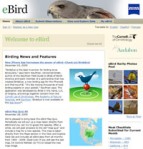Posts Tagged ‘Internet’
Thought o’ the day
Posted on: January 6, 2012
So much about innovation is changing. Globalization, increased need for speed to market, increased costs, mobile workforce, and maybe most importantly the proliferation of the Internet and online collaborative tools. I think O’Reilly’s quote sums it up nicely.
“The central principle behind the success of the giants born in the Web 1.0 era who have survived to lead the Web 2.0 era appears to be this, that they have embraced the power of the web to harness collective intelligence.”
O’Reilly, 2005
Thought o' the day.
Posted on: December 22, 2008
The Internet never forgets…
“I’m rubber and you’re glue. Anything you say bounces off of me but sticks forever in cyberspace.“
Thought o' the day.
Posted on: May 29, 2008
Why I love the Internet. (Case in point – posting random thoughts just like this. Hummm, let’s see what’s going on on Twitter.)
“The beauty of the Internet is that when I want to avoid doing work, I don’t even have to get up to find a distraction.”
Do current TV trends give us insight into the future of the web? If you follow the evolution of TV, it’s quite striking how similar it is to what’s happening with the web. Below is a quick journey through TV’s evolution. Read it once, then go back and read it again thinking about the web.
Wow that’s cool.
When TV first hit the airwaves there were few working channels. You had limited choices but that was ok since the whole thing was so novel. You waited until your favorite show came around, then turned on the set to watch. When it was over, you went back to other interests. You didn’t have anything to compare it to so what you got was ok by you. And advertisers had yet to realize the potential of this new medium.
More options please.
Soon the novelty of TV starts to wear off. Viewers began demanding more choices in programming. Production quality starts to get better and color and special effects are introduced – all in an effort to keep viewer’s attention. Networks introduce different formats – talk shows that feature celebrities, full-length news features, and game shows – all catering to the different needs and desires of viewers.
Some shows get their audiences directly involved. Their programs tap into the collective intelligence (or in some cases ignorance) of their viewers. The audience is actually contributing content to the broadcast. It more interactive, engaging, and feels more genuine.
Give me what I want when I want it.
Programming explodes as more and more people have access to cable. There are hundreds (I personally have over 800) of channels. Some channels are dedicated to very specialized interests – The Military Channel, The Food Network, Home Shopping Network, SciFi, even the Global Catholic Network. It’s less about general information and more about appealing to specific interests.
Give me control.
Today, TV is entering an era where it’s not just about having choices. Now, viewers want to control the outcomes of the programs they watch. New shows like American Idol, Beauty and the Geek, and So You Think You Can Dance, let viewers vote to determine who wins. It’s the hottest trend. Why? Because viewers no longer want to be passive observers, they want control. They want it their way.
Sound familiar?


